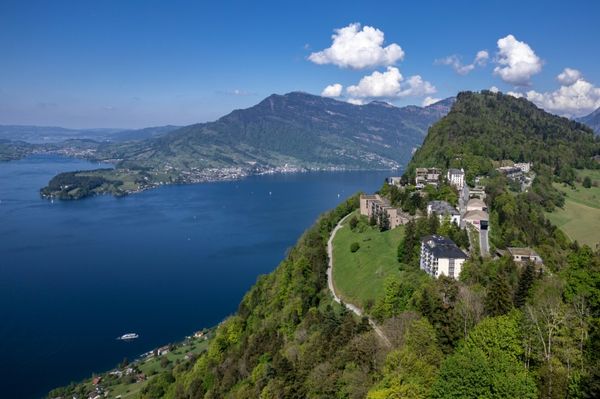
From the low outcrop of grey sandstone, I get my first glimpse of the new turbines. Five kilometres from the hill I’m climbing, construction is under way on 11 turbines at Pines Burn, not far from the town of Hawick.
The structures rise above the sparsely populated Borders landscape like white pillars from the space age. The tallest is 149 metres high. They dwarf everything around them: the rough-grazed hill, the ranks of sitka spruce plantation.
Since the autumn, the turbines’ 65-metre blades have been coming in by lorry. They arrive in single pieces, loaded vertically to minimise their footprint on the road. Nonetheless, each needs a police escort. Roundabouts have been rearranged, roads widened to make way for the blades. Residents use an app to avoid the road closures that accompany each delivery, an event that can only take place on calm days (the blades are, after all, very good at catching the wind). In November, the tyres of one of the lorries were slashed in a layby off the A7. Half of Hawick has been up in arms over the disruption.
Half the hill still lies above me. I press on upwards for the top (you wouldn’t call it a summit), over corrugated sheep tracks and smooth grassy knolls. At the trig point I pause, as I usually do, leaning back into the gusts that are buffeting in from the north. Below me is the sparse landscape I grew up in. To the south and west runs the geometric landscape of forestry: black blocks of sitka, rhomboid shapes of clear‑felled brash. Above this stand the new white towers. To the east are the grassy Cheviots, with their older rural industry: sheep.
As I begin the descent, a solitary meadow pipit lifts and flutters away from me. It’s the first bird I’ve seen on my walk. I crouch down in the patch of grass it flew from. At pipit level, the hill isn’t as smooth or flat as it appeared: the tall, bleached grass stems – windlestrae (or windlestraw in English) – form haystacks, wind‑dampening towers that provide shelter and nest sites.
I descend again, and a snipe bolts out from a clump of rushes. It zigzags into the valley, and its alarm call – a wet squeak like a dog chewing on a rubber toy – hangs for a moment in the air.
• Country diary is on Twitter at @gdncountrydiary







